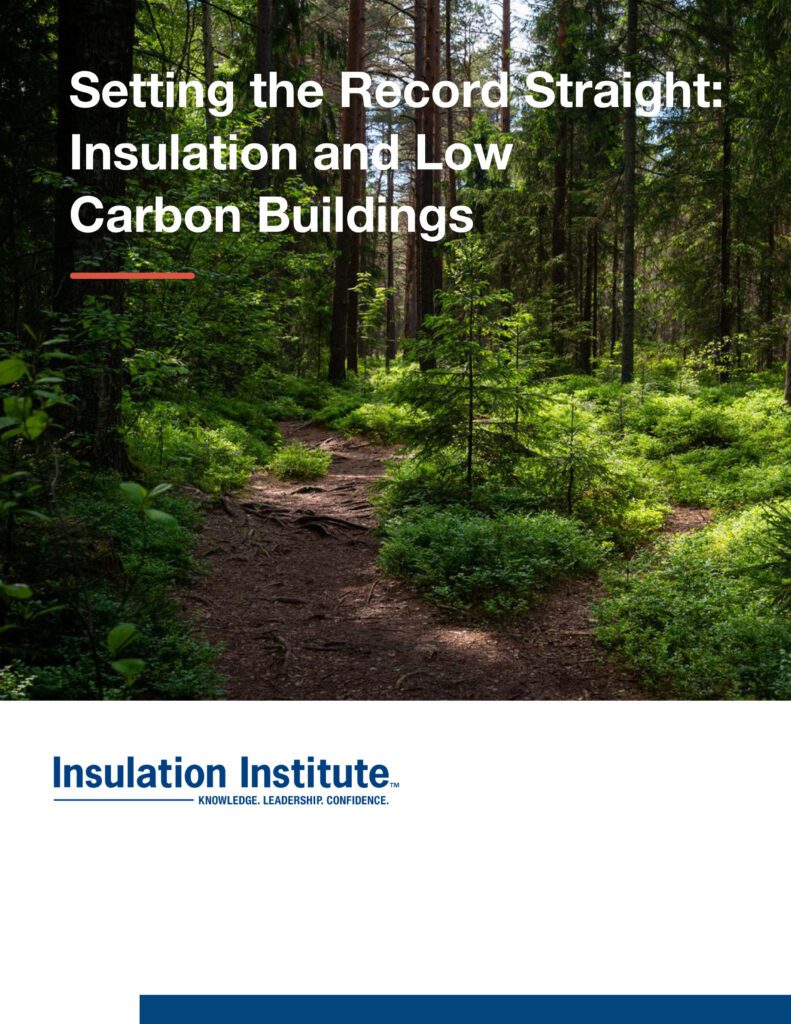
As home builders work to decarbonize construction, sourcing low-carbon building materials (including insulation) is an important objective. However, it can be challenging to make informed choices when misleading information about the carbon impacts of products is commonly cited.
NAIMA’s new guide, Setting the Record Straight: Insulation and Low Carbon Buildings, details the embodied carbon of common insulation products, highlights the rapid payback period, and dispels the myth that cellulose and wood fiber insulation products are carbon negative.
EPDs Lend Insight into Carbon Details
The report includes an analysis from ICF that compares the embodied carbon of the most used cavity and exterior sheathing insulation materials. Where available, ICF used the Environmental Product Declarations (EPDs) of insulation products in its analysis, which ranks insulation products from lowest to highest in embodied carbon. Based on this analysis, cellulose loose fill, fiberglass loose fill, and unfaced batts are the top low-carbon insulation products.
The guide also reveals the carbon payback period (in months) by climate zone for all insulation products. It explains why certain cellulose and wood fiber insulation products are not carbon negative when you consider that when they are landfilled at the end of their useful life, that “stored” carbon degrades and is released back into the environment.
Conclusion
Insulation is one of the best ways to reduce building carbon emissions. Fiberglass insulation products are among the top three insulation products for decarbonization. As builders look to decarbonize the built environment, they focus on adding as much insulation as possible to buildings. Further, builders, architects, and policymakers should pay careful attention to claims made by insulation manufacturers and check those claims against available data.
To access the guide, click here.
